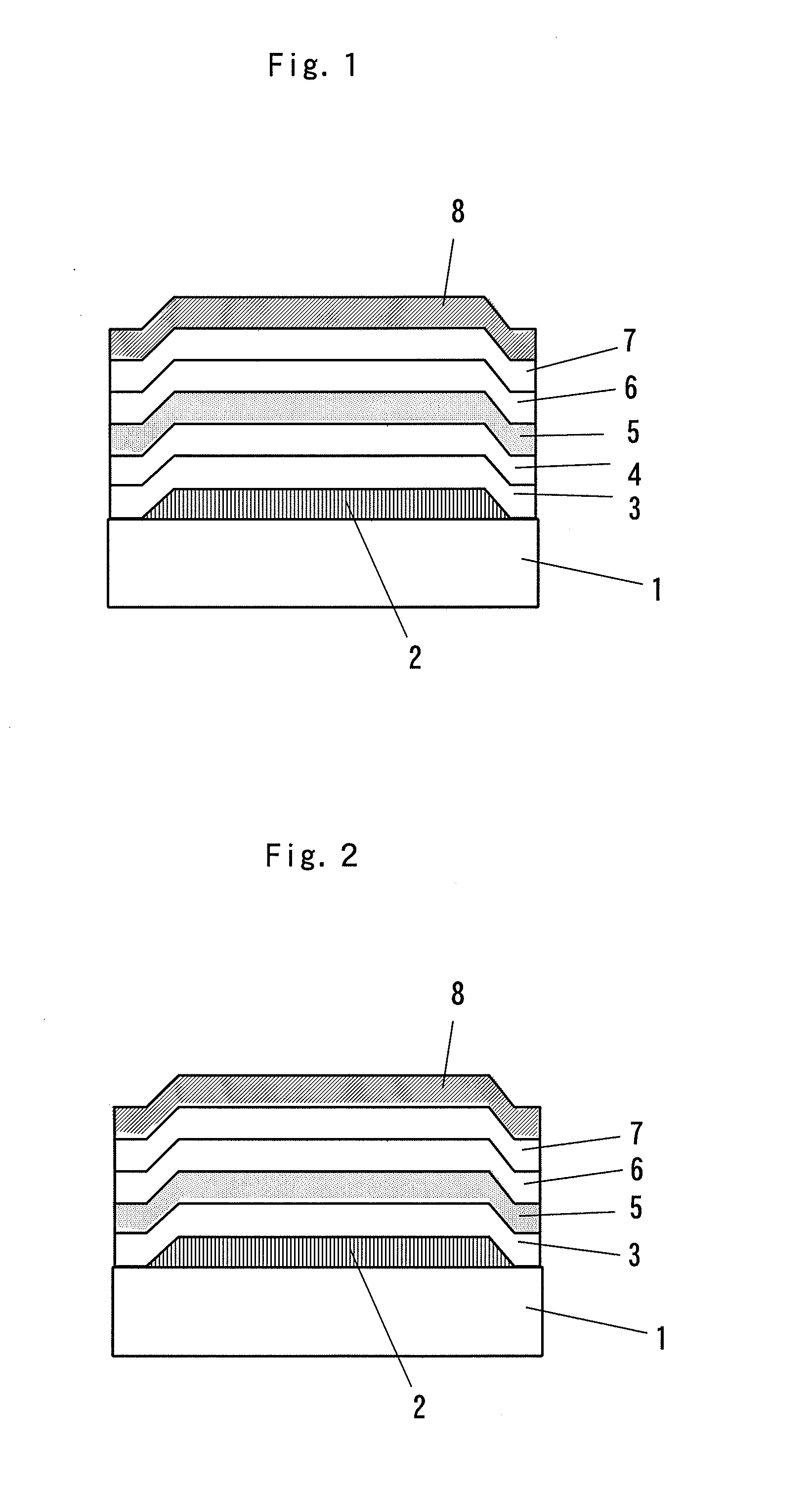Organic electroluminescence device
a technology of electroluminescence device and organic el, which is applied in the direction of solid-state devices, electric lighting sources, and light sources. it can solve the problems of reducing the yield of organic el products, difficult to handle, and the driving voltage of a phosphorescence organic el device with a high quantum efficiency of light emission is higher, and achieves stable life and high temperature preservation without luminance degradation
- Summary
- Abstract
- Description
- Claims
- Application Information
AI Technical Summary
Benefits of technology
Problems solved by technology
Method used
Image
Examples
embodiment 3
For Embodiment 3, plural organic EL devices were fabricated using an n-type-dopant-containing electron transport layer containing another n-type dopant.
Plural organic EL devices of Embodiments 3 were fabricated in the same manner as Embodiments 1, except that n-type-dopant blocking layers made of Ir(ppy)3 at 100 vol % and n-type-dopant-containing electron transport layers of the n-type dopant of tungstate Cs2WO4 instead of the molybdate Cs2MoO4 were layered respectively. The device structure of Embodiment 3 has, in order of ITO / hole injection layer / hole transport layer / light-emitting layer / n-type-dopant blocking layer / electron transport layer / Al, ITO / CuPc(25) / NPB(40) / Ir(ppy)3-9 vol %: TRZ(40) / 1.7 vol %-Cs2WO4:NBphen(20) / Al. Here, the content in the last parentheses ( ) in each layer section denotes a thickness (nm).
Plural organic EL devices of Comparative examples 3 were fabricated in the same manner as Comparative examples 2, except that the n-type dopant of tungstate was used for ...
embodiments 4 and 5
For other Embodiments, plural organic EL devices were fabricated using an n-type-dopant blocking layer serving as a light-emitting layer unified in one piece so as to be an n-type dopant-blocking light-emitting layer having an increased thickness.
A plurality of organic EL devices (Embodiment 4) were fabricated in such a manner that each organic EL device included an n-type-dopant-containing electron transport layer (in which an organic compound capable of transporting electrons of NBphen as a first component was mixed with an n-type dopant Cs2MoO4 containing Cs of alkaline metal as an electron donor of a second component) and an n-type-dopant blocking light-emitting layer (in which an organic compound capable of transporting electrons of TRZ (host material) as a third component was mixed with a heavy atom compound of Ir(ppy)3 containing at least one kind of heavy atoms with an atomic weight of 79 or more as a fourth component (phosphorescence guest material)). Then some characterist...
PUM
 Login to View More
Login to View More Abstract
Description
Claims
Application Information
 Login to View More
Login to View More - R&D
- Intellectual Property
- Life Sciences
- Materials
- Tech Scout
- Unparalleled Data Quality
- Higher Quality Content
- 60% Fewer Hallucinations
Browse by: Latest US Patents, China's latest patents, Technical Efficacy Thesaurus, Application Domain, Technology Topic, Popular Technical Reports.
© 2025 PatSnap. All rights reserved.Legal|Privacy policy|Modern Slavery Act Transparency Statement|Sitemap|About US| Contact US: help@patsnap.com



